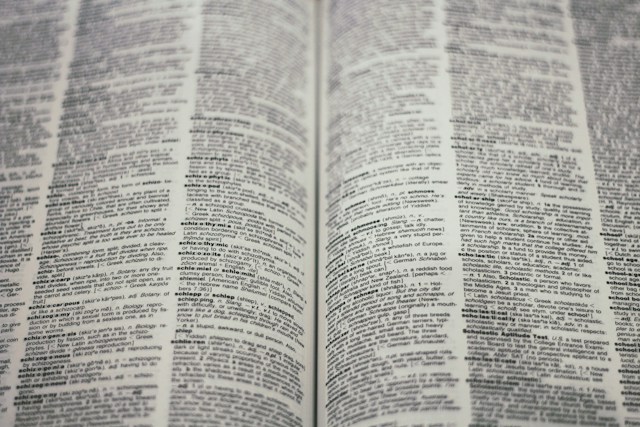In our increasingly globalized world, the importance of effective and efficient communication across borders cannot be overstated. Language is vital in our everyday lives, shaping our thoughts, conversations, interactions, and even our relationship with the world around us. As technology continues to evolve, so too does the way we interact with it. One area where this interaction is particularly noticeable is in the field of language translation, specifically within the tourism industry.
The Power of Machine Learning and AI in Language Translation
Artificial Intelligence (AI) and Machine Learning (ML) are two interconnected technologies that have revolutionized numerous industries, including language translation. With the aid of AI and ML, language translation has become faster, more accurate, and more efficient, thereby changing the game for the travel and tourism industry.
A voir aussi : How Can Autonomous Delivery Systems Reshape Urban Logistics?
Machine learning, a subset of AI, uses algorithms and statistical models to perform tasks without explicit instructions. It involves feeding data into a model, which then learns patterns and makes data-driven predictions or decisions. This learning capability is a crucial element in language translation, as it enables the system to learn and adapt to new languages, dialects, and phrases.
AI, on the other hand, is a broader concept that entails machines or systems performing tasks that would typically require human intelligence. In language translation, AI-powered tools utilize natural language processing and understanding to translate text from one language to another, taking into account the context, cultural nuances, and idiomatic expressions.
Cela peut vous intéresser : Sustainable fashion: innovations in eco-friendly clothing
The Intersection of Language Translation and the Travel Industry
There is a symbiotic relationship between the language translation industry and the travel sector. Travel is a door into new cultures, experiences, and languages. At the same time, language differences can pose a significant barrier for travelers in foreign lands. This is where language translation services, particularly those powered by AI, come into play.
AI-powered language translation tools can decipher and translate information in real-time, reducing the language barrier and enhancing the travel experience. These tools can interpret road signs, menus, and local dialects, enabling travelers to navigate unfamiliar territories with ease. Furthermore, they can translate spoken conversations, making interactions with locals less daunting and more enjoyable.
With the increasing use of smartphones and the internet, these tools are now easily accessible to travelers on-the-go, further amplifying their impact on the travel industry. From booking accommodations and tours to ordering meals and asking for directions, AI-powered language translation tools are bridging the language gap and transforming the travel experience.
The Role of Generative AI Systems in Language Translation
Another significant advancement in AI-powered language translation is the development of generative AI systems. Unlike traditional machine learning models, generative systems can generate new content or outputs based on the data they have been trained on. For language translation, this means creating translations that not only convey the meaning of the source text but also maintain its style, tone, and context.
Generative AI systems can handle multiple languages, dialects, and even slang, making them ideally suited for the travel industry. They can adapt to new communication norms and language trends faster than human translators, ensuring that translations remain current and relevant. These systems can also process large volumes of data in real time, making them invaluable for businesses in the travel industry looking to communicate with customers across different languages and regions.
The Future of AI-Powered Language Translation in the Tourism Industry
The future of AI-powered language translation in the tourism industry is bright and filled with possibilities. As AI and machine learning technologies continue to evolve, we can expect to see even more advanced translation tools that deliver faster, more accurate, and more personalized translations.
For instance, future translation tools might leverage advanced AI techniques like deep learning to better understand and replicate the nuances of human language. This could result in translations that are not only accurate but also reflect the style and personality of the speaker, resulting in a more authentic and engaging communication experience.
In conclusion, AI-powered language translation is no longer a futuristic concept but a reality that is already transforming the tourism industry. It is bridging the language gap, enhancing communication, and enriching the travel experience, one translation at a time. The advancements in this field are not only revolutionizing the way we travel but also how we communicate and connect with each other in our ever-shrinking global village.
The Potential of Neural Networks in Language Translation
The power of neural networks in language translation is another fascinating aspect of AI technology. Neural networks are a subset of machine learning algorithms that mimic the structure and function of the human brain. They consist of interconnected layers of nodes, or “neurons,” that transmit and process information. This structure allows neural networks to learn and adapt over time, making them ideal for complex tasks such as language translation.
Neural machine translation (NMT) is an approach to language translation that uses deep learning, a type of machine learning that utilizes neural networks. NMT systems can translate whole sentences at a time, taking into account the context of each word. This is a significant improvement over traditional machine translation systems, which typically translate word-by-word, often resulting in less accurate translations.
By leveraging neural networks, AI-powered translation tools can better understand and replicate the subtleties of human language, including idioms, colloquialisms, and cultural references. This can result in more accurate and natural-sounding translations, enhancing the communication experience for travelers. Moreover, neural networks can process information in real time, helping to break down language barriers and facilitate cross-cultural interactions in the travel tourism industry.
Embracing the Evolution of AI-Powered Translation in the Travel Industry
As the world becomes increasingly connected, the travel industry must embrace the evolution of AI-powered translation tools. These tools not only make travel more accessible by breaking down language barriers, but they also enhance the travel experience by facilitating communication and understanding between different cultures.
As technology continues to advance, we can expect AI-powered translation services to become even more integrated into the travel experience. For instance, future travel apps might include built-in translation features that allow users to communicate seamlessly in any language. These apps could leverage AI to provide real-time translations of conversations, menus, signs, and more, making travel in foreign countries easier and more enjoyable.
The potential applications of AI in the travel industry are numerous. Hotels, airlines, and other businesses could use AI-powered translation tools to better serve their international customers. Travelers could use these tools to communicate with locals, navigate unfamiliar environments, and fully immerse themselves in the culture of their destination.
Conclusion
From breaking down language barriers to enhancing cross-cultural communication, AI-powered language translation is revolutionizing the travel and tourism industry. By leveraging technologies like machine learning, deep learning, and neural networks, AI-powered translation tools are able to provide faster, more accurate, and more natural-sounding translations than traditional human translators.
The advancements in this field have the potential to transform the way we travel, making it more accessible and enjoyable for everyone. As we move forward, it’s clear that the future of travel will be shaped by the continued evolution of AI-powered translation. This technology not only bridges the language gap but also connects us to each other and the world in ways we never thought possible.
In this evolving narrative of the global village, AI-powered translation is not just a tool but a catalyst for a more connected and understanding world. The future of travel is here, and it speaks every language.











